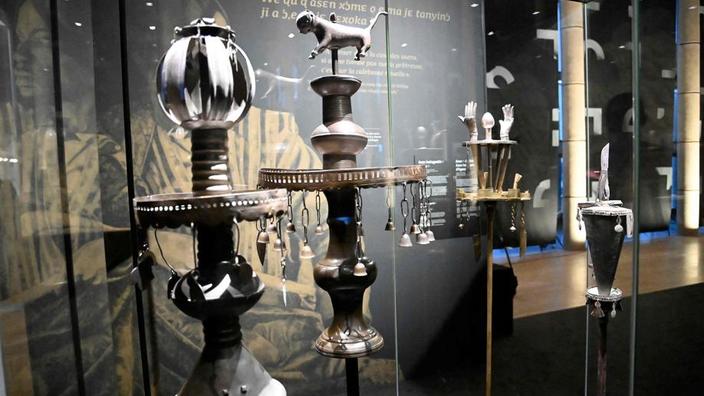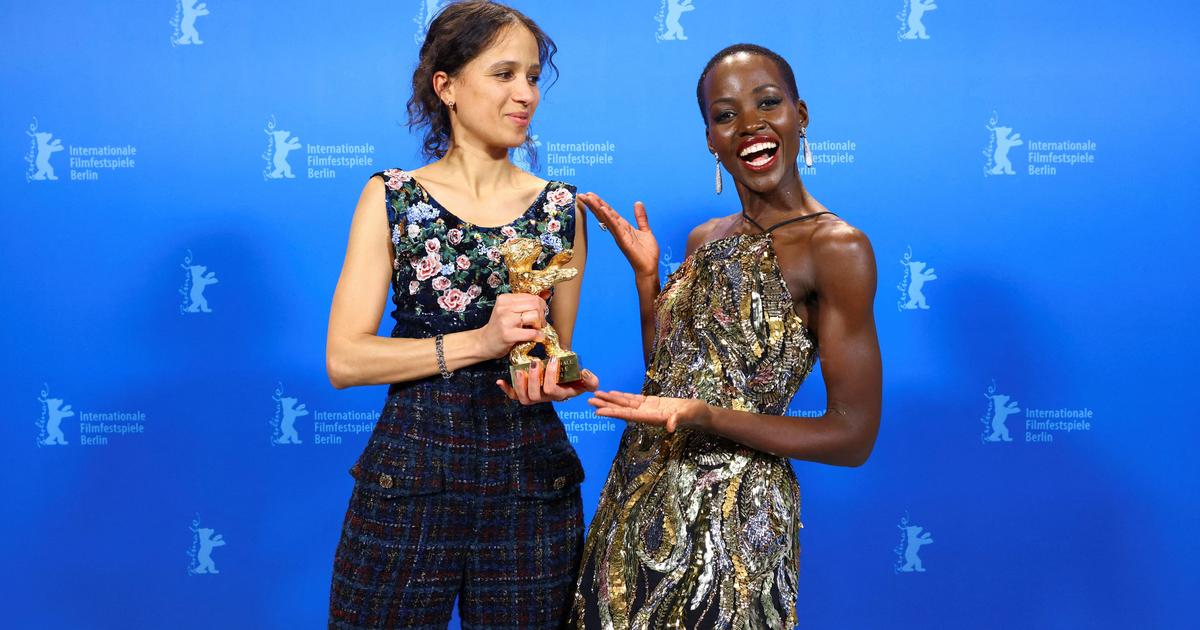Beninese President Patrice Talon inaugurates a historic and highly symbolic exhibition in Cotonou on Saturday evening, where the 26 royal treasures returned in November by France will be presented for the first time to the people of Benin, 129 years after their theft.
These pieces had been looted in 1892 by French colonial troops from the palace of Abomey, capital of the Kingdom of Dahomey, in the center-south of present-day Benin.
Read alsoFrance solemnly returns 26 treasures looted in Benin
Within the presidential palace in Cotonou, a museum space of more than 2000 m2 has been set up to host this exhibition entitled "Art of Benin yesterday and today, from restitution to revelation", which will open Sunday morning to the public until May 22.
The 26 works returned by France, after more than two years of negotiations between Paris and Cotonou, are the first major return of objects from public collections to an African country.
"Ferment of national unity"
"With this exhibition, we are giving back to the people of Benin, part of their soul, part of their history, and their dignity,"
Benin's Minister of Culture, Jean-Michel Abimbola, told AFP.
President Patrice Talon, who will officially inaugurate the exhibition in the middle of the afternoon, presented Saturday morning the 26 treasures formerly exhibited at the Quai Branly museum in Paris, to the French Minister of Culture Roselyne Bachelot, traveling to Cotonou .
"It's an absolutely magnificent exhibition and it perhaps renders even better the majesty, the creativity, the incredible historical, political and aesthetic heritage that these 26 works represent"
, declared the French minister after her visit.
These works
"have left a kingdom, but they are returning to a republic, and we want this to be the ferment of national unity
," said the Beninese minister.
Before its unification, Benin was made up of several kingdoms, including that of Dahomey, well known for the artistic vitality of its court.
Be careful, therefore, it is no longer just a question of the "treasures of Dahomey", but of "the treasures of Benin, of all Beninese" insist the authorities.
The first room of the exhibition, whose immense black painted walls give it a solemn character, gives pride of place to the thrones of the sovereigns of Dahomey.
And in particular, that of King Ghézo (1797-1818), a majestic wooden sculpture with Afro-Brazilian motifs nearly two meters tall, surmounted by a curved tablet.
“Since the beginning of the installation, I have not stopped contemplating it”, explains Théo Atrokpo, one of the mediators of the exhibition, who quivers with impatience “to explain its history” to his compatriots.
"I had already seen it in France, but to see it here, at home, is to rediscover a part of our soul, it is to connect us to our history", adds this 42-year-old cultural guide.
On Friday evening, the exhibition was previewed to the press and the art world.
From the half-man half-lion statue of King Glèlè to the half-man half-bird statue of King Ghézo, passing through the gates of the royal palace, the guests, very moved, crowded to admire the treasures.
Associated Contemporary Artists
"It's very moving to find myself facing the throne of King Ghézo, I had not imagined him so big, so powerful",
confides Laeila Adjovi, Franco-Beninese artist whose several works are also presented during this exhibition.
She is one of 34 contemporary Beninese artists who have been selected to present more than a hundred works.
The government wants to link "history to the present", and show that the "Beninese artistic genius has endured", despite the dispossession of part of its heritage.
From the monumental tapestries by Yves Appollinaire Pèdé honoring voodoo, to the installation made from hair by Dimitri Fagbohoun, via the Afro-futurist robots of Emo de Medeiros and the monumental and colorful paintings of Moufouli Bello, this second part shows the artistic vitality of the Beninese contemporary scene.
Development of a framework law
Several gallerists and actors from the international art world who came to attend this historic exhibition, confided that they were amazed by the scripting, which, according to them, has nothing to envy to those of the major European museums.
A snub to the argument long put forward by certain institutions, which refuse to return works, of a lack of training and funding to exhibit and preserve them on the continent.
France, but also other European countries, still has a large number of works looted during colonization.
Benin requests the restitution in particular of the sculpture of the God Gou, held by the Louvre Museum in Paris.
“This restitution work continues
,” assured Roselyne Bachelot.
“We are working on a framework law to facilitate these returns”
.
Legislative work could take at least two years.








